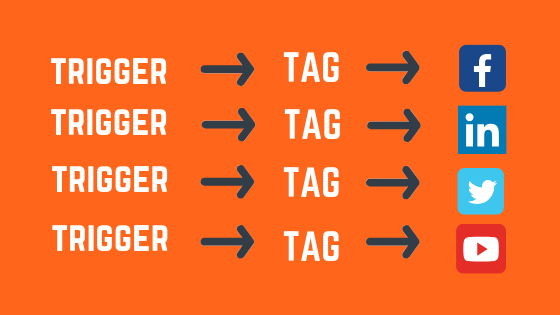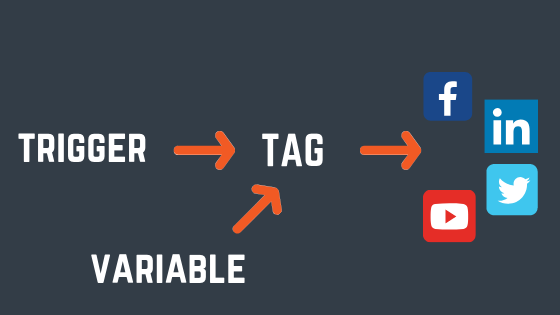An Efficient Approach to Google Tag Manager Implementation
There are countless ways to use any platform and Google Tag Manager (GTM) is no exception. When you’re working with any system that creates and organizes data, several GTM implementations can lead to the same result. Let’s take a look at expanded and abstract:
- Expanded: Every tag, trigger and variable has a separate implementation and can be controlled individually, producing a lot of definitions.
- Abstract: The definitions themselves are more complex, but there are fewer of them, which leverages the power of their similarities.
Expanded (Standard) Implementation
You might be tempted to think that there’s no reason to learn the intricacies of what’s possible or to assemble your definitions in any other way than the most basic form. A lot of GTM implementations that we see are expanded. They describe every detail separately, creating several tags and triggers.
Expanded has its advantages. It’s easier for novices to edit, it requires almost no development knowledge and it’s more straightforward to fine-tune very small details because everything is manual. A separate tag for each button in a tab bar lets you omit the tabs that don’t interest you or filter your collection of data under different conditions.
Different triggers are needed to differentiate clicks on different icons so that different tags can deliver the correct data to Google Analytics.


Abstract (Improved) Implementation
The difference between expanded and abstract implementations are in less-observable qualities. Examples of this include how quickly they can be implemented, how clearly they express the idea of what’s being accomplished and how easily they can be changed.
Often you have enterprise-scale systems from which you’re trying to collect enterprise-scale quantities of data. An expanded implementation can quickly become a manageability nightmare. If your tab bar has five buttons, a single tag with a single trigger can accomplish the same job as five tags with five corresponding triggers.
A little custom programming makes this possible, as long as you’re willing to lock in certain assumptions. Additionally, if a sixth tab is added, the single tag can take up the task of tracking it automatically without any changes made within GTM. The custom programming is added to a GTM variable, often in the form of a custom JavaScript function.
The trigger doesn’t need to differentiate which icon is clicked because a variable delivers dynamic data to Google Analytics.


Moreover, if you’re looking for advanced filtering or transformation, you can actually write it into the programming that runs the single tag. The more advanced you’re willing to get, the more access GTM can achieve. JavaScript written in GTM runs on the page, so it has access to any Application Program Interfaces (APIs) that are exposed to the page. If you’re working with developers, you can even have them provide you with APIs that send you underlying data which you couldn’t otherwise access through out-of-the-box GTM tools such as interaction with a custom-built Google Map.
Conclusion
Google Tag Manager implementations are what you make of them and Google designed Tag Manager so that it could be used in either an expanded manner or an abstract one. Therefore, larger enterprises with more complex tracking needs would benefit greatly from an abstract implementation.
About the Author
Elise Kleinoeder is a Communications Intern at thunder::tech. Outside of work you can find her relaxing near the lake.
Related Blog & News
Essential AI Tools for Web Development: Streamline, Automate, Innovate
Blog | Sep 19, 2025thunder::tech Earns 5th Inc. 5000 Honor
Blog | Aug 11, 2025Splash Pages, Landing Pages & Microsites: Which One Fits Your Campaign?
Blog | Jul 30, 2025Award-Winning Digital Marketing & Design at thunder::tech
Blog | Apr 23, 2025Contact us today! No pressure, but we are here to help
Reach out to learn more about how thunder::tech can help your business not only succeed, but accelerate.